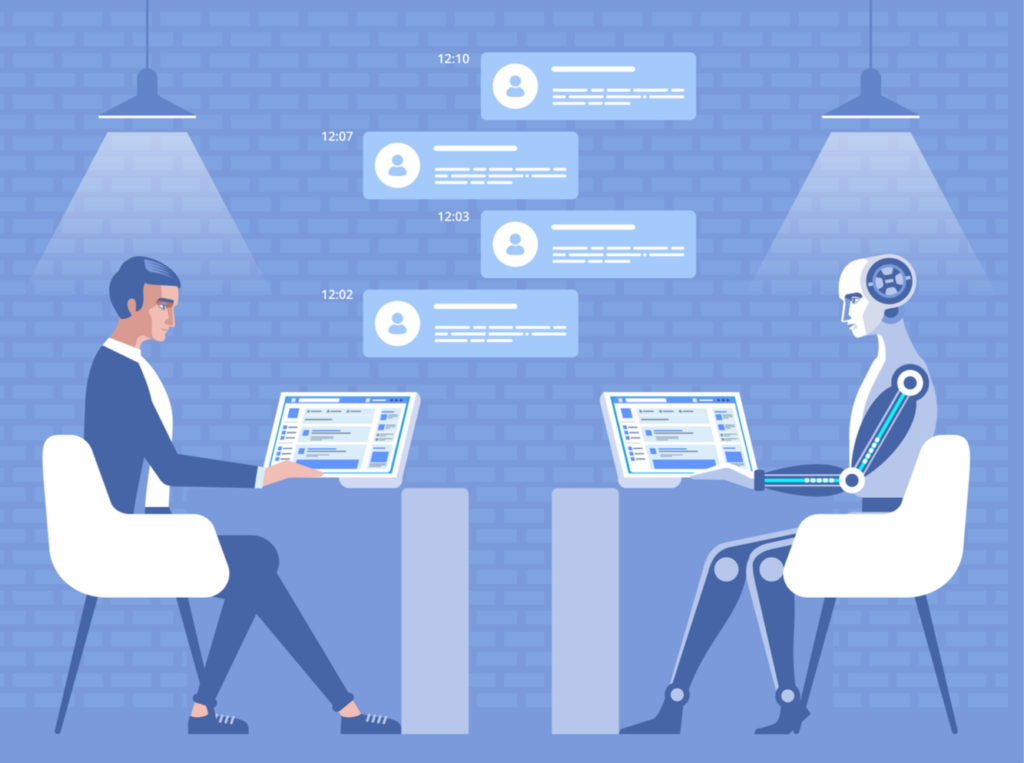Chat Artificial Intelligence

Chatbots are computer programs or artificial intelligence (AI) agents designed to interact with users through text-based or voice-based conversations. They simulate human conversation and are used in various applications to provide automated assistance, answer queries, and engage with users in a conversational manner.
There are different types of chatbots based on their functionality and capabilities:
- Rule-Based Chatbots: These chatbots follow predefined rules and patterns to respond to specific keywords or phrases. They are relatively simple and have limited capabilities.
- AI-Powered Chatbots: These chatbots use natural language processing (NLP) and machine learning algorithms to understand and interpret user inputs dynamically. They can learn from past interactions and improve their responses over time, making them more flexible and capable of handling more diverse conversations.
- Virtual Assistants: These are advanced AI-powered chatbots that can perform complex tasks, such as setting reminders, booking appointments, and providing personalized recommendations.
- Social Media Chatbots: These chatbots are integrated into social media platforms to interact with users and provide customer support.
How Chatbots Help Businesses, Technology, and Humans:
- Improved Customer Support: Chatbots can provide instant and round-the-clock customer support, answering frequently asked questions and resolving issues quickly, leading to improved customer satisfaction.
- Cost Savings: Automating customer support with chatbots can significantly reduce operational costs for businesses by handling repetitive queries and tasks.
- Personalization: AI-powered chatbots can gather and analyze user data to offer personalized recommendations and experiences, enhancing user engagement and retention.
- Increased Efficiency: Chatbots can handle multiple conversations simultaneously, improving response times and overall efficiency in customer interactions.
- Enhanced User Experience: By offering quick and relevant responses, chatbots create a more positive and seamless user experience.
- Integration with Various Platforms: Chatbots can be integrated into websites, mobile apps, messaging platforms, and social media, allowing businesses to reach their customers across different channels.
Potential Side Effects and Challenges:
While chatbots offer numerous benefits, there are some potential side effects and challenges to consider:
- Limited Understanding: Chatbots may not fully understand complex queries or nuances of human language, leading to misinterpretations and inaccurate responses.
- Lack of Empathy: As chatbots lack emotions, they may not provide the same level of empathy and understanding as human customer support agents.
- Security and Privacy Concerns: Chatbots handling sensitive data must adhere to strict security and privacy regulations to safeguard user information.
- Dependency on Technology: Relying heavily on chatbots may lead to reduced human interaction, affecting interpersonal communication and human connections.
- Need for Continuous Improvement: AI-powered chatbots require continuous training and monitoring to ensure accurate and relevant responses, which can be resource-intensive.
Overall, chatbots have the potential to revolutionize customer support and user engagement, benefiting businesses, technology, and humans alike. However, it is essential to strike a balance between automation and human touch to maintain effective communication and user satisfaction.